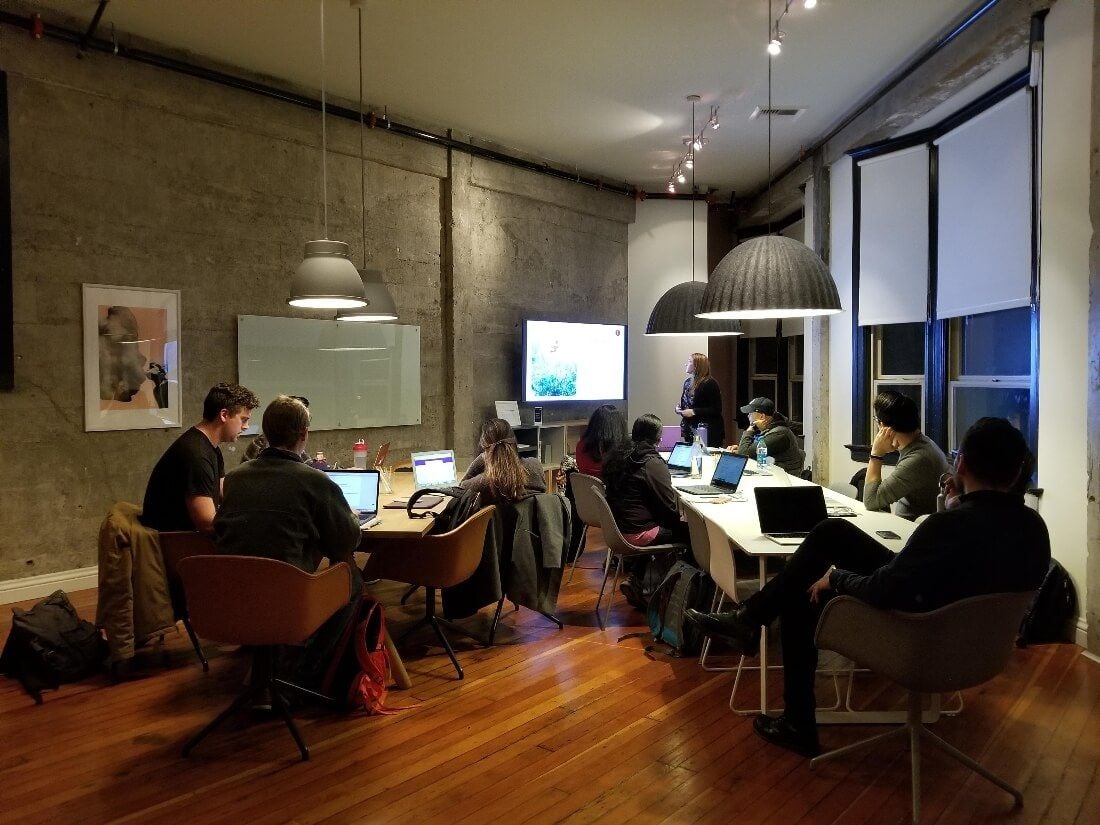Keeping up with the constant changes to the workplace can feel exhausting as the world adapts to hybrid workplaces as the norm. Keep up to date with all things hybrid work related on the DuoMe blog. This article is all about hybrid meeting rooms, what they are and how to create one in your organisation.
What Is A Hybrid Meeting Room?
A hybrid meeting room is where organisations can hold meetings for everyone at the same time, no matter their location. The hybrid meeting room is a key feature for any modern workplace that has hybrid, remote and office-based employees.
The way the world conducts meetings is changing, a recent October 2022 statistic revealed that only 20% of meetings are now fully in-person, with the other 80% being virtual or hybrid meetings.
Hybrid meeting rooms allow organisations to maintain collaboration no matter the location, be it across different office locations, coffee shops or even airport departure lounges. Companies that do not create dedicated hybrid meeting rooms will be struggling to keep up with the changing face of business as the future of work becomes hybrid.
If you’re still confused as to what is meant by a hybrid meeting, we’ve also created this guide on hybrid meeting etiquette that explains all.

Why Hybrid Meeting Design Is Important
Jaime Teevan, chief scientist from Microsoft, spoke on the importance of designing a well-thought out hybrid meeting room. “The risk of hybrid meetings is that in-person attendees become anonymous faces in a room, while remote attendees are left speaking into a void, not knowing if they are seen or heard, or how to jump in and take a turn,”
Hybrid meetings need to be an inclusive experience for all attendees to maximise collaboration and boost productivity. There are many different aspects to consider when creating the perfect meeting room, let’s take a closer look at our top tips for designing the ideal hybrid meeting room.
Tips On How To Design A Hybrid Meeting Room

Technology Is Key
First and foremost, when it comes to adapting your conference rooms for hybrid meetings, technology is going to be the focus.
The audio, visual and recording equipment chosen must be of the highest quality possible in regard to your budget. As a base, your hybrid meeting room will require a decent camera, display screens, microphones and speakers. Each device’s software should be certified to work with your primary collaboration tools with most vendors offerings, Works with Teams or Zoom support..
If you need to compromise on design aspects to ensure the equipment and hardware is up to spec, then consider it a worthwhile sacrifice. Hybrid meetings can be difficult as they are, trying to include both remote and physical attendees, technology doesn’t need to be an extra barrier.
Video Options
The market leaders for video conferencing platforms, including Zoom and Microsoft Teams, have built their product offerings to include hybrid meeting room solutions including tabletop touchscreen interfaces. These high-spec products can help ease barriers between participants and create a smooth experience for all.
Remote attendees might find it hard at points to focus on who is doing the talking, adaptive video cameras can help with this. Smart cameras can automatically detect who is doing the talking and focus on them, and then when required, can zoom out for a group view. Then, finally, you can also incorporate video switchers into your video conferencing platform to stream video multiple angles. These can create a more natural feeling meeting for remote participants.
Zoom’s Smart Gallery goes a step further incorporating AI to detect the individual faces of in-person participants. Then it pulls them onto the same screen as if they were remote participants to create the classic gallery view of individual squares like in virtual meetings.
Large, Clear Screens
Although this may depend largely on the space available in your meeting room, ideally when it comes to display screens, the larger the better. Another route to consider are smart projectors that easily turn a blank wall into a giant screen for a truly immersive experience for all attendees.
The most successful hybrid meetings allow all attendees to collaborate and share content as they would if they were all in the same room. Consider dual screens that allow for remote participants to be visible whilst also being able to present decks or spreadsheets on a separate screen.
Collaboration
On the topic of display screens is collaboration. Monitors would ideally be interactive computers as opposed to dated TV screens hooked up to laptops.
Hardware like interactive whiteboards that in-person attendees can use are great and then you can introduce, graphic tablets which remote attendees can use to access the same whiteboard could be a great hack. The options are endless and nowadays, are only truly limited by costs.
Think Of Remote Attendees
When designing the room, it’s all too easy to focus on the in-person attendees’ experience and forget about possible remote participants.
In order to maximise engagement levels for all atendees, when setting up things like cameras, test out the angles to ensure that it will be a pleasant viewing experience for remote workers as well.
Scheduling Tools
From a more practical viewpoint, if your organisation holds a lot of hybrid meetings throughout the day, you will want to consider scheduling tools for booking meeting rooms. Fortunately there are lots of options available, with capabilities to schedule direct on an app or computer, avoiding any double-booked scenarios.
Scheduling systems are also useful tools in effective office space management. If you are still in the planning stages of adapting your meeting rooms to the hybrid workplace, you could analyse your schedule tool’s data to analyse how, when and where people are using meeting rooms. Are the smaller rooms more popular? Are they being used for the correct purpose? Perhaps you might want create different sized meeting rooms depending on the data gleaned.

Microphones And Speakers
While allocating resources to the different technology and equipment, be careful not to focus too much on display and recording software. There’s nothing worse than poor audio during a hybrid meeting, resulting in endless requests to repeat sentences.
Hybrid meeting rooms must have microphones that can pick up audio from 360 degrees with speakers that can pick up and relay vocal frequencies easily, without interference from background noise. There are specialist conference speakers available that can do this, and coupled with individual microphones placed around the room or infront of each participants will provide the perfect audio experience. The final touch is a mixer, this is software that can combine audio from different microphones and put it into one single channel for remote attendees.
Space Is Important

Pre-pandemic when most meetings were held in-person, it was easier to cram more attendees into a smaller space with standing meetings. However, with the advent of hybrid work, technology is becoming more and more important and so there needs to be sufficient space for all the necessary equipment.
Your meeting room will need enough space to comfortably fit large display screens that can show 6-9 participants on gallery mode. Then you will need to have ample space between each seated participant to ensure that microphones and smart cameras can distinguish between speakers and focus on the correct face.
Cramped environments can also affect the acoustics of a meeting room translating into a poor audio experience for remote attendees. Where viable, consider bringing in experts to ensure the optimum setup is created.
Lighting
If you’re designing your meeting room from scratch, you’d be well-placed to consider lighting in the drawings. Lighting can play a huge role in creating the right atmosphere for a collaborative experience that energizes participants. Opt for even and diffused lighting with soft ceiling lights.
No One Wants To See Wires
Wires and plugs can turn the most sleek conference room into a clunky environment. Try and minimise the visibility of wires where possible, both from an aesthetic point of view and also for the IT teams benefit. A good solution to cut down on the number of wires is to opt for bluetooth connectivity where possible.
Final Words
After going through all the necessary points to consider when bringing in hybrid meeting rooms, the first step will be to decide whether you can make a few adjustments to an existing meeting room or if you need to bring in the designers.
With all the technology involved, hybrid meeting rooms aren’t a cheap investment but they are vital to the running of a modern organisation.







